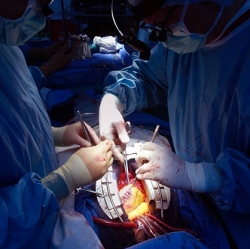
Lead investigator Prof Shahin Rafii from Weill Cornell Medical College and Ansary Stem Cell Institute, and his colleagues show that endothelial cells are powerful biological machines that drive regeneration in organ tissues by releasing beneficial, organ-specific molecules.
They discovered this by decoding the entirety of active genes in endothelial cells, revealing hundreds of known genes that had never been associated with these cells.
They also found that organs dictate the structure and function of their own blood vessels, including the repair molecules they secrete.
“Together, the studies show that endothelial cells and the organs they are transplanted into work together to repair damage and restore function. When an organ is injured, its blood vessels may not be able to repair the damage on their own because they may themselves be harmed or inflamed.”
“Our work suggests that that an infusion of engineered endothelial cells could engraft into injured tissue and acquire the capacity to repair the organ,” Prof Rafii said.
“These studies – along with the first molecular atlas of organ-specific blood vessel cells reported in the Developmental Cell paper – will open up a whole new chapter in translational vascular medicine and will have major therapeutic application.”
“Scientists had thought blood vessels in each organ are the same, that they exist to deliver oxygen and nutrients. But they are very different, and each organ is endowed with blood vessels with unique shape and function and delegated with the difficult task of complying with the metabolic demands of that organ.”
In the Developmental Cell study, the scientists examined nine different tissues at homeostasis as well as liver and bone marrow recovering from a traumatic injury. They developed technology that helped them obtain a pure population of endothelial cells in a very rapid time frame. From these cells, they were able to take a snapshot of all the genes that are being expressed in the various populations of endothelial cells known as vascular beds.
